By Willem Oosthoek
Photos by Bob Bellows, Benita Lane and J. Frank Harrison(Willem Oosthoek Collection)
And then the final day of racing began, with two events on schedule.
The Online Magazine for Italian and French Classic Car Enthusiasts
By pete
By Willem Oosthoek
Photos by Bob Bellows, Benita Lane and J. Frank Harrison(Willem Oosthoek Collection)
And then the final day of racing began, with two events on schedule.
By pete
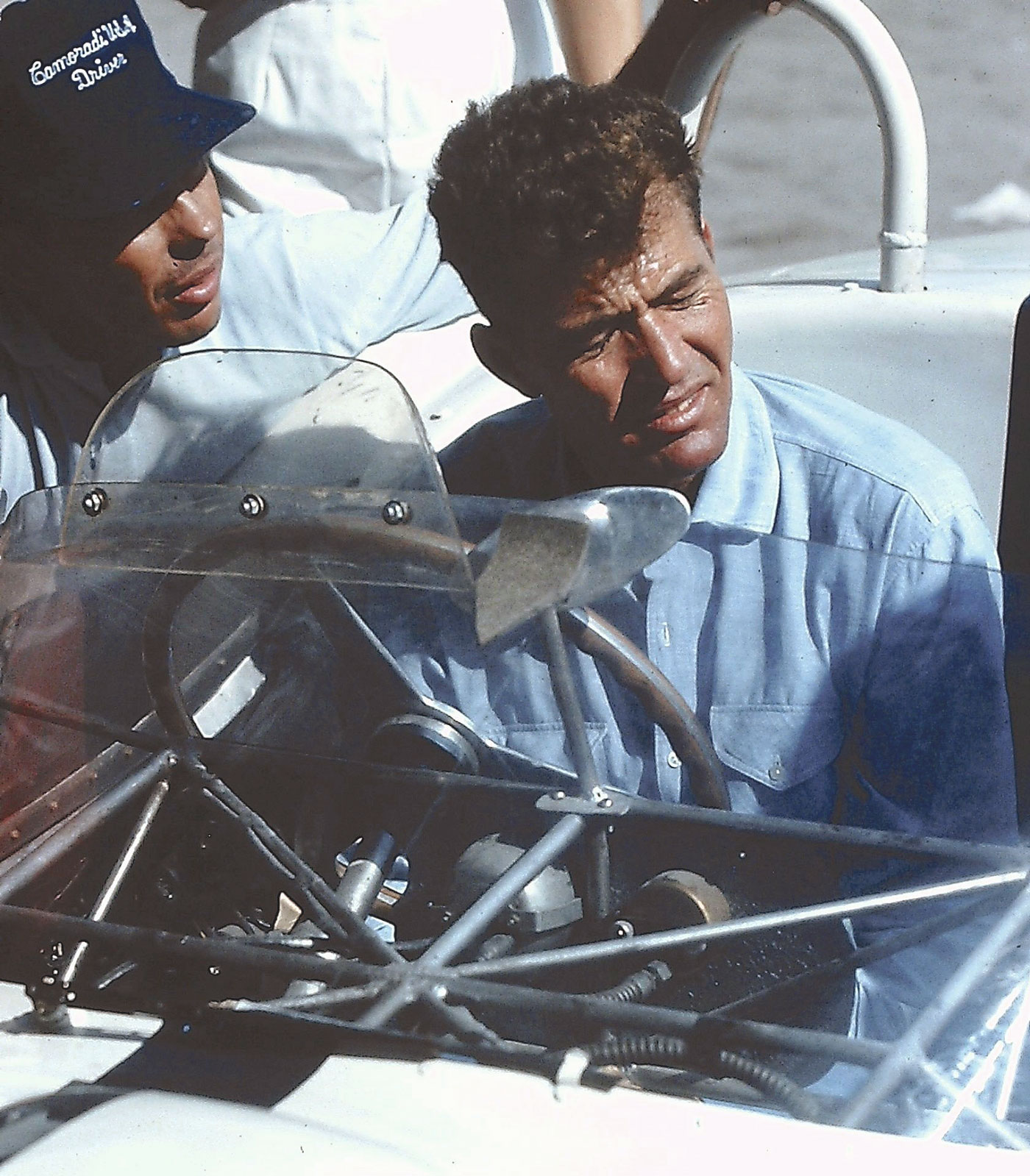
Dissatisfied with his 570S Maserati, Shelby became available for the Birdcage ride. Here Casner is showing him the layout of the land, or rather the cockpit of a car in which Shelby had never sat before.
By Willem Oosthoek
Photos by Bob Bellows and Benita Lane (Willem Oosthoek Collection)
Then the action began. After a few days of practice, the first 5-lap preliminary for the Tourist Trophy on November 29th was for under-2-liter GT entries. Johnny Cuevas and his 1.6-liter Carrera Speedster won over Jay Chamberlain’s Lotus Elite. In the 5-lapper for larger GT cars, Stirling Moss in a private Aston Martin DB4GT beat Roy Salvadori’s special-bodied works Austin-Healey 100S. In the 25-lap Tourist Trophy itself Moss dropped out after leading and Cuevas claimed CAMORADI’s first international victory, with Chamberlain second again.
By pete
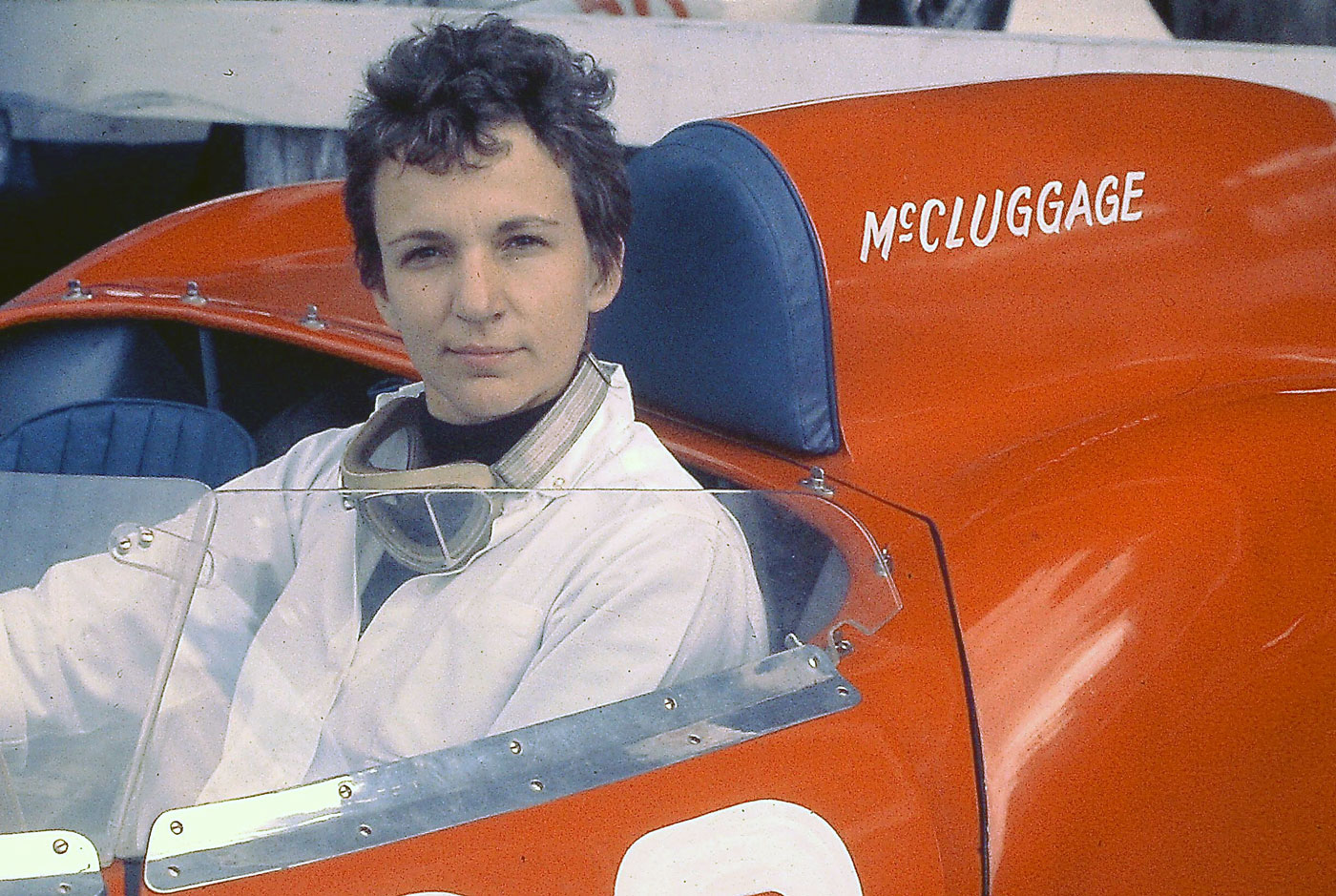
Denise in the OSCA 750S (chassis 763) that ‘Lucky’ Casner acquired from Robert Publicker just before Nassau. No time for a respray in CAMORADI colors. The car was originally owned by Luigi Chinetti.
Story by Willem Oosthoek
Photos by Bob Jackson, Benita Lane and Bob Bellows (Willem Oosthoek Collection)
Obviously, a number of English marques were present at Nassau. The two 4.7-liter Chevy-powered Listers came from Texas, one owned by Ronnie Hissom, the other by Jimmy Younger. Hissom was a wildcatter in Midland who had bought his car via CSSCI. Sources vary about its chassis number, either BHL18 or the more logical BHL118. Jim Hall owned the first Lister bought via the agency (BHL108) and since Hissom complained why he received a much older car than Jim’s, it was probably BHL18.
By pete
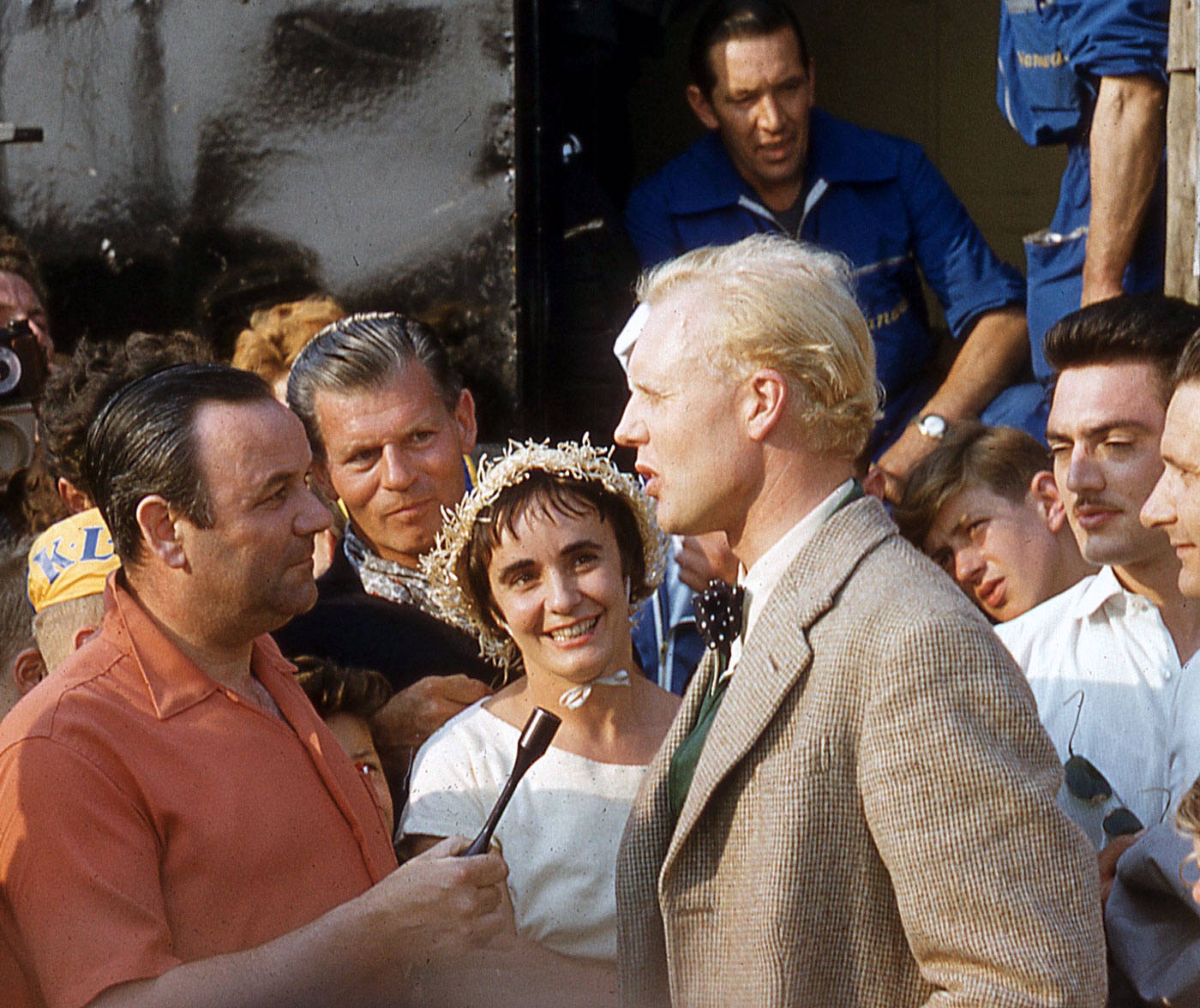
June 6th, 1958. Mike Hawthorn being interviewed near the Vanwall van at Reims. Photo by Robert Pauley
Story by Denise McCluggage
Photos and captions by Graham Gauld and Robert Pauley
On top of the Le Mans crash of 1955 that killed four score or more and for which many Germans, mostly in the press, blamed Mike Hawthorn as a key instrument, he was having his darkest season in Grand Prix racing. He collected not a point toward the championship. Nothing. He was driving for Tony Vandervell and the Vanwalls were still suffering from birth pangs. Vanwall, like Mike, still had three full years to go to its world championship.
By pete
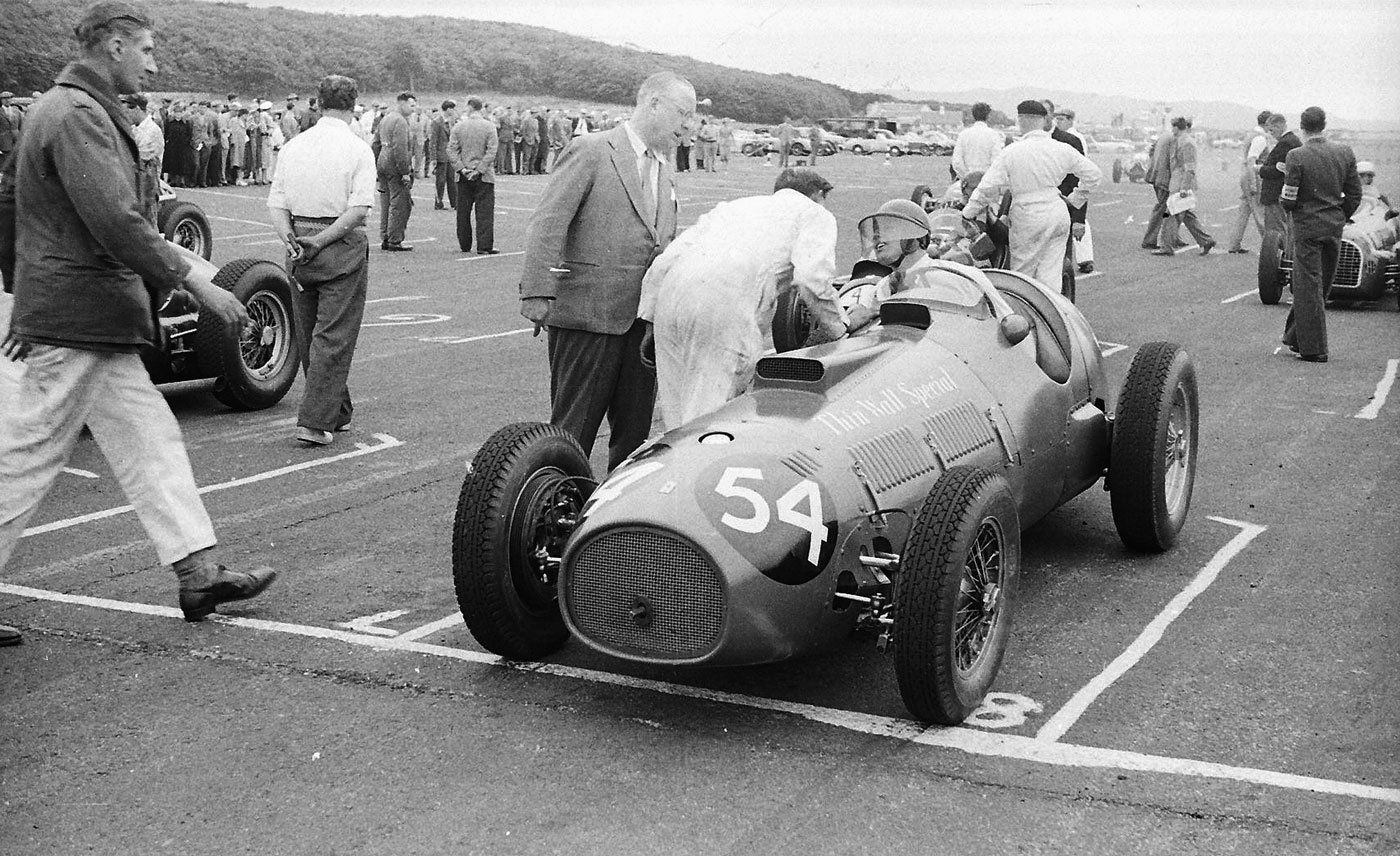
The first Ferrari Mike Hawthorn raced was this modified 375 4.5 litre car, the Thinwall Special entered by Tony Vandervell seen standing beside the car. The meeting was at the Turnberry circuit in 1953.
Story by Denise McCluggage
Photos and captions by Graham Gauld
There have been many “firsts” in the life of John Michael Hawthorn starting that tenth day in April, 1929, when he first saw light of day. His father, Leslie, was a garage owner and a man active in motorcycling and motor-racing circles, putting Mike close to this world from the time he was a tyke.
By pete
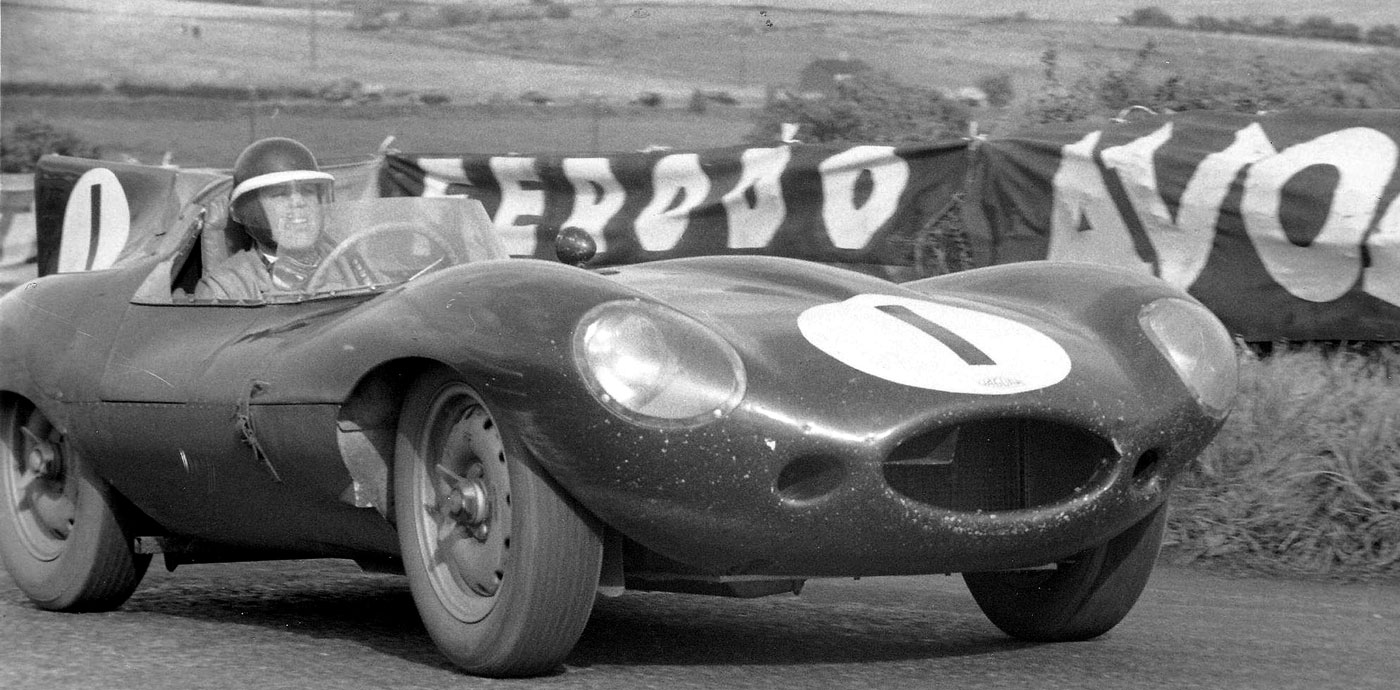
Mike Hawthorn, Concentrating hard on the exit from the hairpin with the Jaguar D-Type in the 1955 Tourist Trophy race at Dundrod.
From the Archives, September, 2013
Story by Denise McCLuggage
Photos and captions by Graham Gauld
The late Marquis de Portago was once passing judgment on various Grand Prix drivers and marking the ones he thought most likely to succeed to Fangio’s throne. One famous name he dismissed with a shrug: “He’s too hard to classify. He’s erratic. He seldom finishes. He never takes care of himself.”
If Portago had lived until 1959, he would have seen the driver he named least-likely-to-succeed become the 1958 driving champion of the world. But he would be no more surprised than the tall, tow-headed wearer of the crown — Mike Hawthorn — himself.
By pete
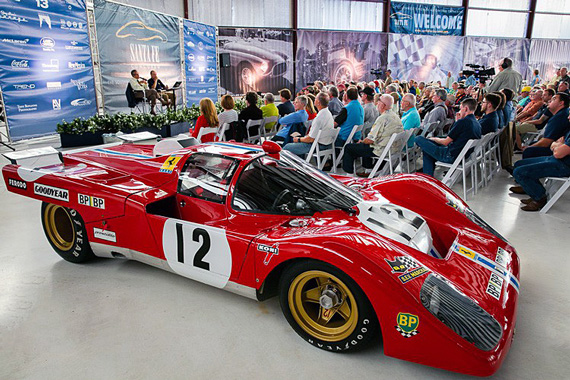
Luigi Chinetti and Michael Lynch presented a history of the Chinetti family and North American Racing Team in Hanger K at the airport on Friday afternoon. Besides the audience of 200, there were some NART cars in attendance as well. This Ferrari 512 M, chassis # 1020, finished third at Le Mans, driven by Sam Posey and Tony Adamowicz. The car was later driven to several world records at the Bonneville Salt Flats by Luigi Chinetti, Jr., Paul Newman, Graham Hill and Milt Minter. The 512 won the Luigi Chinetti Award at the Concorso. Credit: Garret Vreeland
By Michael T. Lynch
The sixth edition of the Santa Fe Concorso took place over three days under beautiful Southwestern skies. Despite the good weather, wonderful cars and great fellowship, the event was poignant because of the loss last May of journalist/racer/philosopher Denise McCluggage who was a Santa Fe resident and involved with the Concorso from the beginning. That feeling was tempered because all of us knew a life well lived when we saw one, and you couldn’t go far without feeling Denise’s presence. [Read more…] about Ferrari and McCluggage Honored at Santa Fe
By pete
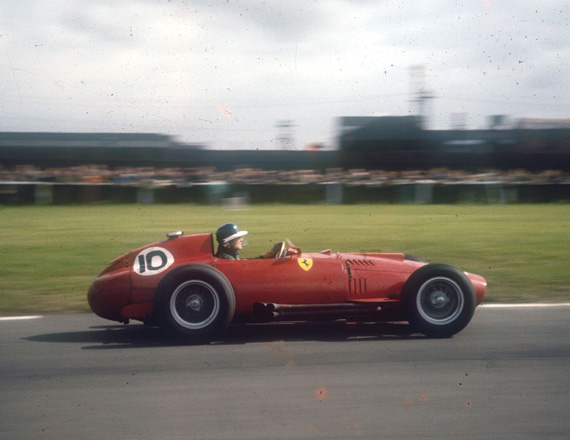
For 1957 Mike Hawthorn was back at Ferrari and raced this Lancia-Ferrari in the British Grand Prix at Aintree.
Story by Denise McCluggage
Photos and captions by Graham Gauld
On top of the Le Mans crash of 1955 that killed eight score or more and for which many Germans, mostly in the press, blamed Mike Hawthorn as a key instrument, he was having his darkest season in Grand Prix racing. He collected not a point toward the championship. Nothing. He was driving for Tony Vandervell and the Vanwalls were still suffering from birth pangs. Vanwall, like Mike, still had three full years to go to its world championship. [Read more…] about Mike Hawthorn by McCluggage Part 3
By pete
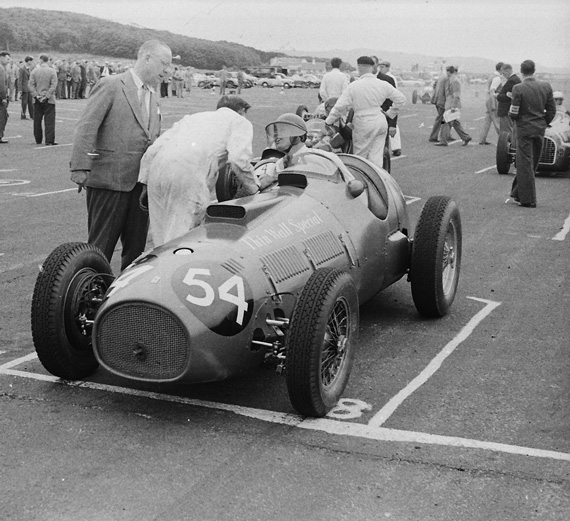
The first Ferrari Mike Hawthorn raced was this modified 375 4.5 litre car, the Thinwall Special entered by Tony Vandervell seen standing beside the car. The meeting was at the Turnberry circuit in 1953.
Story by Denise McCluggage
Photos and captions by Graham Gauld
There have been many “firsts” in the life of John Michael Hawthorn starting that tenth day in April, 1929, when he first saw light of day. His father, Leslie, was a garage owner and a man active in motorcycling and motor-racing circles, putting Mike close to this world from the time he was a tyke.
His first time at the wheel of a car was when he was eight. He “borrowed” an old Jowett that had been left for repair and, with it in gear and the engine off, ground it around a field behind the garage on the starter motor. His first vehicle was a 1927 Norton motor-bike which he owned when he was 14, but for tinkering purposes only as he was too young to drive on the road.
[Read more…] about Mike Hawthorn, Part 2 by Denise McCluggage
By vack
Drawing by Duane Unkefer
By Denise McCluggage
“I Go Pro” was written for and published by “Sports Cars Illustrated”, February, 1959 and is reprinted here with the permission of the author and artist.
THE FACTORY TEAMS had arrived for the Grand Prix of Germany. (A small championship race that was to follow mine.) A friend who happened to drive for Ferrari (yes, Phil Hill) offered to drive me in my car around the Ring, imparting wisdom enroute. It was a fast lap and a valuable one. But costly, too. Apparently in the thrashing about of the wheel, my benefactor’s hand had brushed the key case which was enough to jar the key which was enough for the bum switch to engage the starter motor and-well, like we were already going. And going very fast. Not until we stopped after a complete tour did we hear the hopeless grinding of the starter motor chewing itself into oblivion. Naturally, it was burned out (oh, the smell of it) and furthermore the starter ring gear was as toothless as an old hag.
By pete
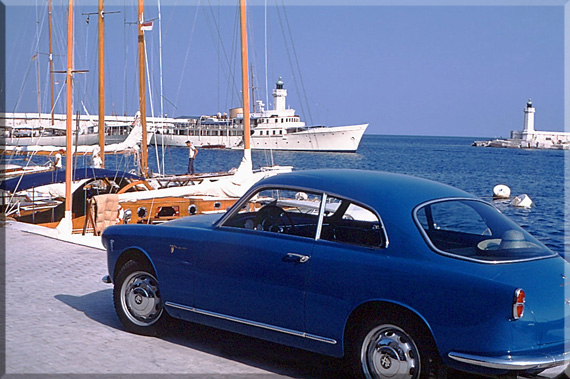
The McCluggage Alfa Romeo Giulietta Sprint Veloce Comfortable at Monaco. Photo copyright Denise McCluggage.
By Denise McCluggage
“I Go Pro” was written for and published by “Sports Cars Illustrated”, February, 1959 and is reprinted here with the permission of the author and artist.
ANYONE WHO HAS EVER HEARD the throb of a racing engine and knew what they were hearing has heard of the Nurburgring. And well they might. It is the giant, bearded Granddaddy of all racing circuits. And yet whatever one has heard, or been told, or has seen in photographs or in movies is misleading to the point of being completely wrong.
By pete
[Denise McCluggage passed away on May 6th of this year. A great fan of VeloceToday, she contributed several articles; below is one of her best. We miss you, Denise.]
By Denise McCluggage
At the time whereof I write, the late 1950s, Modena was the real home of Ferrari. Maranello, a sleepy hill town, boasted the low, gated factory but little else. No test track, no museum, no shop. No tourists. No Il Cavallino, the posh ristorante opened in 1962 across from the factory on a slight rise set back from the road. Cavallino Bianco Bar, a working man’s bar of the type found in every Italian village, occupied the site.
Memory has me coming out of the factory gate and looking up at the bar. A few tables are topped with the ubiquitous Martini & Rossi umbrellas and scattered on the beaten earth before the dark entry. At the tables, singly and in pairs, sit somber working men in earth-brown coveralls. Some wear the odd pill-box-shaped hats common in a pre-baseball cap world. They wrap their hands around glasses of that clear stinging stuff called grappa. Or maybe a nearly purple Lambrusco, the local wine. There is nothing for tourists in this Maranello of the working man’s bar because there are no tourists. And that’s because there are very few of the tourist-spawning Ferraris; in 1958, if every Ferrari owner in the world chose to make the pilgrimage to the Emilia countryside where his car was built, the few hotels in Modena – down this winding road out of Maranello, down the long and lovely hillside – will likely have room for every one of them.